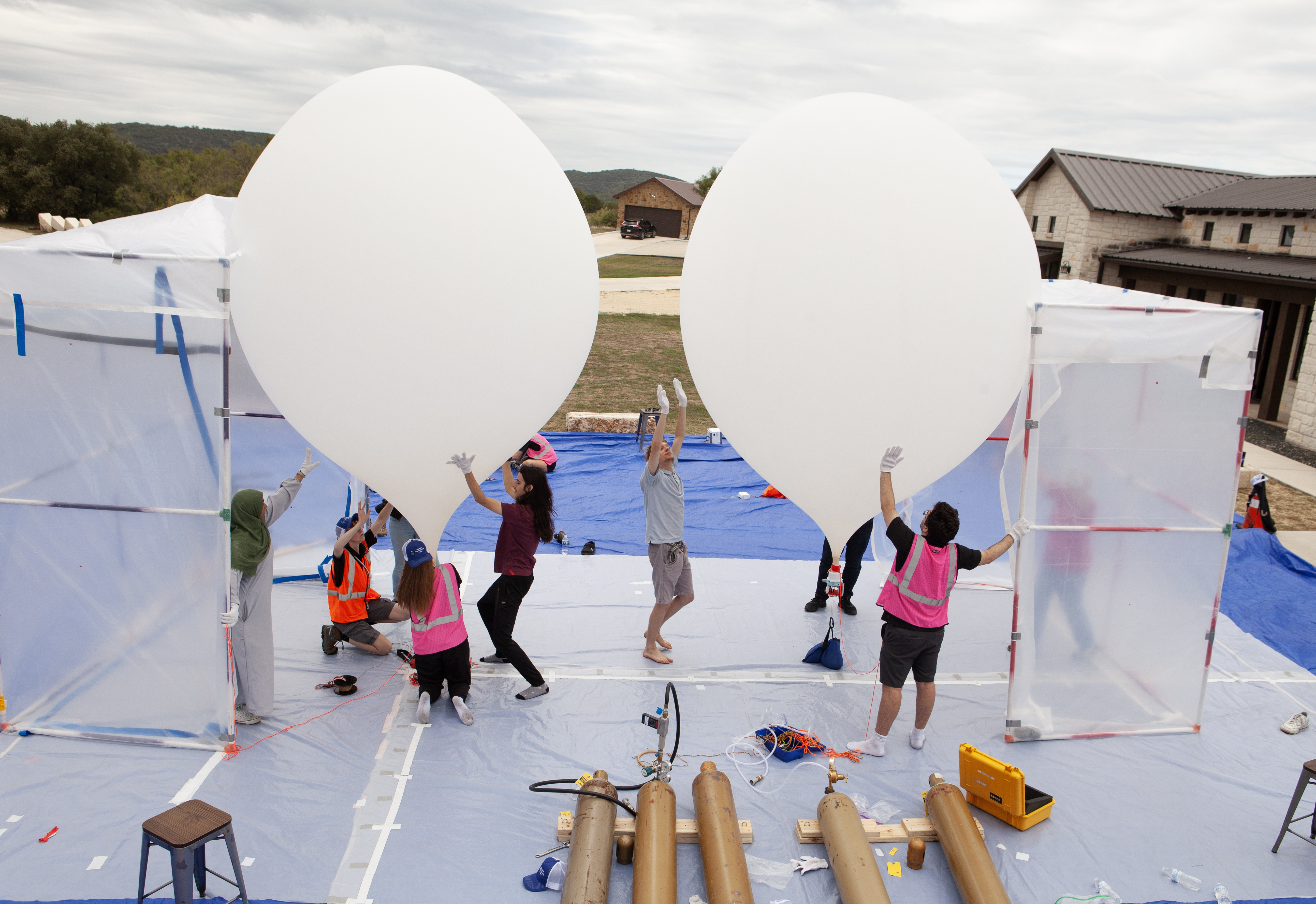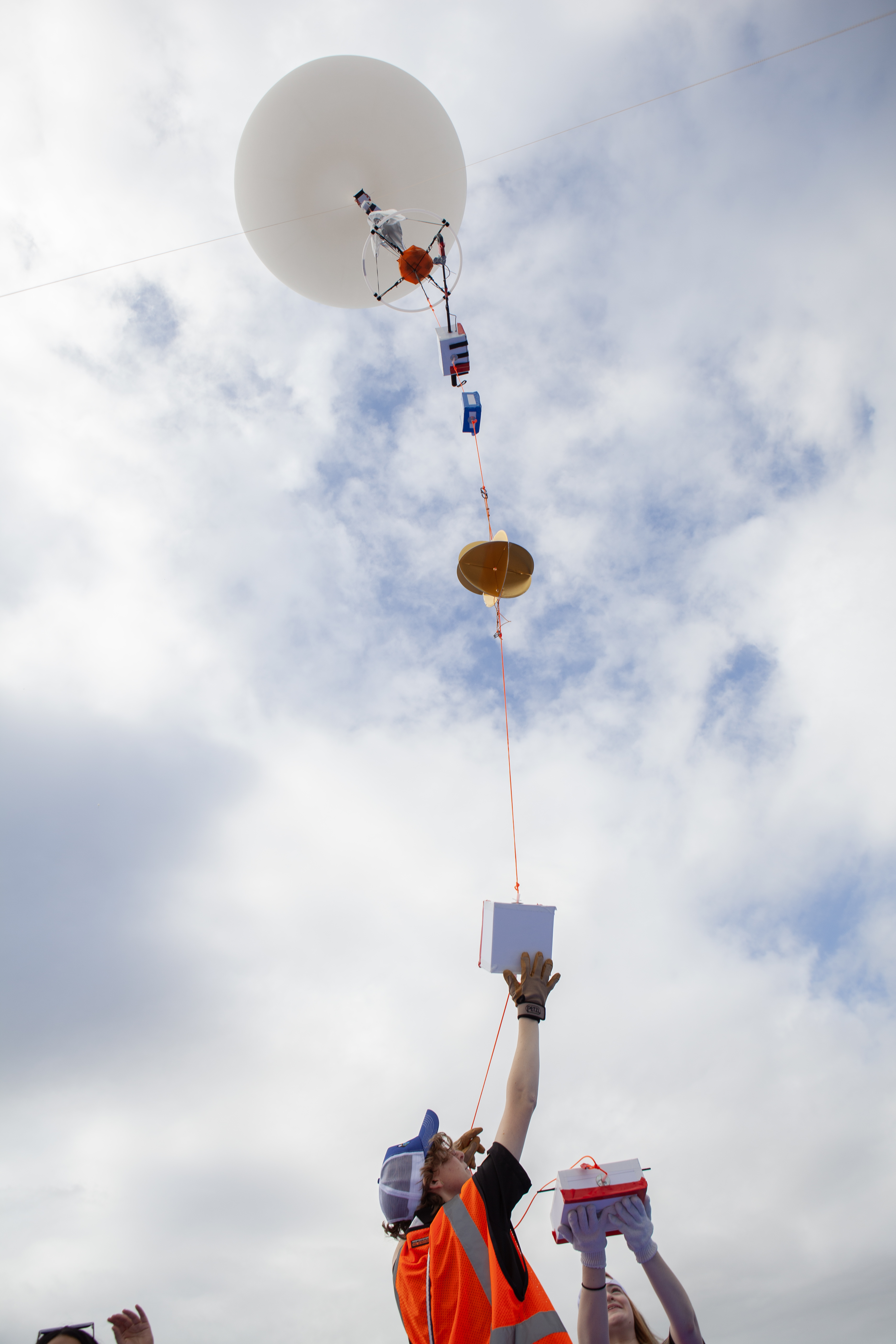 |
 It’s an event many of us may only experience once or twice in our lifetimes—and students involved in NASA’s Nationwide Eclipse Ballooning Project (NEBP) are making the most of it. On April 8, a total solar eclipse will be viewable from thirteen states in the U.S., and partially viewable from many others, including Maryland. It’s an event many of us may only experience once or twice in our lifetimes—and students involved in NASA’s Nationwide Eclipse Ballooning Project (NEBP) are making the most of it. On April 8, a total solar eclipse will be viewable from thirteen states in the U.S., and partially viewable from many others, including Maryland.
As part of the NEBP, students from 75 colleges and schools will fan out by the hundreds to locations along the path of totality in a bid to launch high-altitude balloons and gather data during the eclipse. Students from the University of Maryland’s Balloon Payload Program (BPP), known as UMD Nearspace, will be among them.
Having conducted a series of practice tests in Cumberland, Maryland, the UMD students and their mentor, Balloon Payload Program Director Mary Bowden, are heading to Indiana this weekend ahead of the actual eclipse. The travel team includes 30 undergraduates, two graduate students, and two faculty members, as well as friends, family, and enthusiasts.
On Monday, the team will drive to its launch location, which is expected to be near Muncie. Two balloons will be launched  within 15 minutes of each other at the beginning of the partial eclipse, allowing them to reach an altitude of between 70,000 and 80,000 feet during totality. One balloon will be stocked with atmospheric sensors, among other payloads. The team hopes to glean data that will help improve weather forecasting and even our ability to model climate change. within 15 minutes of each other at the beginning of the partial eclipse, allowing them to reach an altitude of between 70,000 and 80,000 feet during totality. One balloon will be stocked with atmospheric sensors, among other payloads. The team hopes to glean data that will help improve weather forecasting and even our ability to model climate change.
The other balloon, dubbed Terp Balloon, will carry a number of UMD experiments, including one designed to track how environmental exposure affects 3D-printed samples.
Eclipses not only astonish humans and other earthly creatures, but they alter atmospheric conditions, temporarily cooling the air. This gives researchers a valuable, if brief, chance to track cooling and heating patterns.
"The eclipse itself is kind of stirring up the atmosphere as it traverses across the country," Bowden told National Public Radio, which profiled the team earlier this month. "What we're looking for is the signature, or the effect, of the movement of the shadow."
Balloons, she noted, are uniquely well-suited to carry out such measurements, since they can drift through the atmosphere for an extended period, and at altitudes of 75,000 to 80,000 feet.
Getting them up there, and keeping them on track, during a short, precise time-window is a challenge, however—one which requires careful appraisal of the launch site, wind conditions, and the balloon’s trajectory. Among other variables, the team must correctly calculate the amount of helium needed to achieve sufficient lift as the balloon carries its precisely weighed payloads skyward. With the period of totality lasting under four minutes, there’s no margin for error.
Although the team hopes its efforts will contribute to research, Bowden stresses that UMD Nearspace’s main purpose is educational. By planning and executing balloon launches, students learn the processes used by NASA when it sends rockets into the cosmos. Notes Bowden: “Many of our aerospace students are intensely interested in the space side of the field, so we’re giving them an opportunity to go through an experience that's very similar to building flight hardware and launching it into space.”
“It's motivational, it's educational, and it's really just fun!”
Related Articles:
Relive Totality With Clark School Images, Videos
April 5, 2024
|

